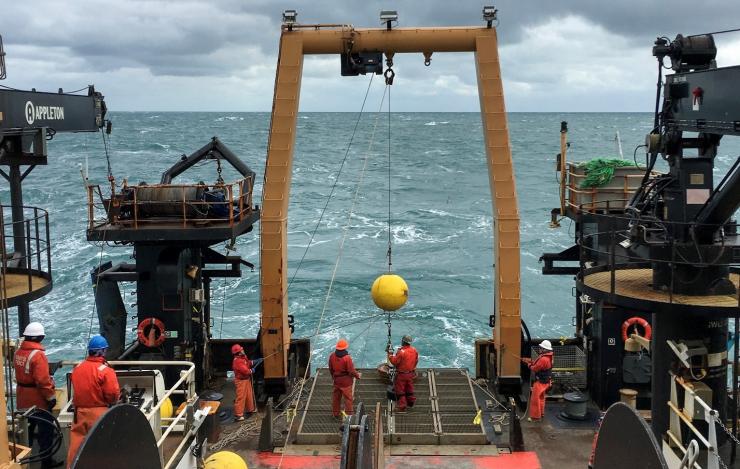This weekend, the EcoFOCI program completed its eleventh and final research cruise of its field season on the F/V Aquila to maintain and enhance an innovative array of biophysical moorings in conjunction with annual ship-based hydrographic data in the Bering Sea.
The team recovered 14 and deployed 10 moorings, including swapping the M2-site surface mooring for a sub-surface mooring to prevent damage from the ice to ensure 25 years of nearly continuous data. Scientists from PMEL, NOAA Fisheries Alaska Science Center and University of New Hampshire also collected some measurements from a CTD (conductivity-temperature-depth), nutrients, oxygen, plankton and larval fish along the Distributed Biological Observatory (DBO) Line 1, which has only been sampled once in 2017. These DBO lines are designated “hot spots” centered on locations of high productivity, biodiversity and rates of biological change in the Bering, Chukchi, and Beaufort seas.
Results from these observations and experiments will help describe important ecosystem linkages among climate, plankton, fishes, birds and mammals. Continuous monitoring from this region provides critical data to support sustainable management of living resources in the Bering Sea.
The EcoFOCI program is a collaborative research effort by scientists at the Pacific Marine Environmental Lab (PMEL) and Alaska Fisheries Science Center (AFSC) focusing on the unique and economically important high-latitude ecosystems of Alaska.



